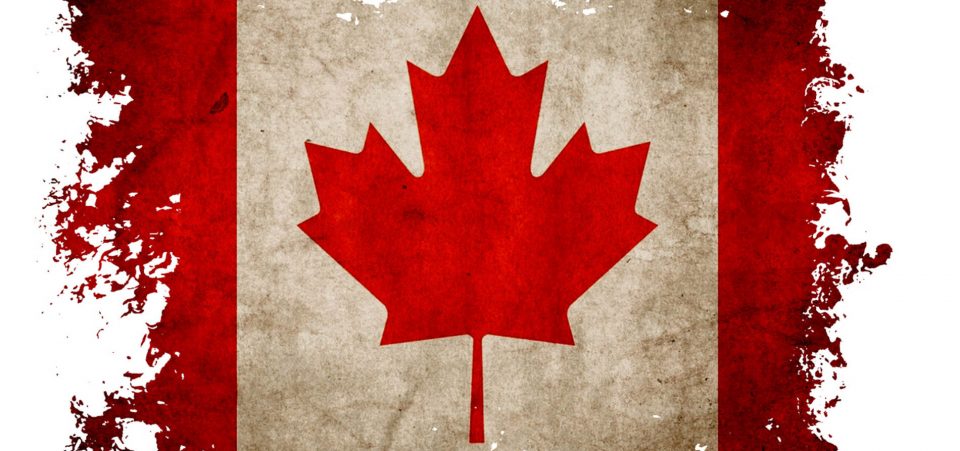Canadian Economy to Stall for More than a Decade
For the most part, Canada escaped the same kind of economic downturn that sent the United States into the Great Recession. In the U.S., banks collapsed, the housing bubble popped, unemployment soared, and the economy ground to a halt. Meanwhile, in Canada, the banking industry was strong, housing prices continued to climb, and the economy chugged along.
A lot has changed since then. Canadians are in debt, wages are flat, and the economy is a lethargic heartbeat away from a recession. In fact, it might be a great time for investors to short all things Canadian.
According to a recent report, Canada’s economy is expected to flatline at two percent (or less) over the next 15 years. From 2016 to 2020, Canada’s economy is forecast to grow an anemic 1.8% annually. For the next decade (2021 to 2030), Canadian gross domestic product (GDP) will advance at a paltry two percent a year. (Source: “Canada’s economy to lose ground globally as growth stalls at 2% for more than a decade, report warns,” Financial Post, December 28, 2016.)
This will put Canada’s ranking as one of the world’s biggest economies in jeopardy. Canada is currently the 10th–largest economy in the world, but it could fall to the 12th spot by 2030.
What will weigh down the Canadian economy? One might think that Canada’s reliance on energy and oil prices would hobble the country’s economy, but it is more diversified and less exposed to the price of Brent Crude than other oil-dependent countries, like Russia.
These Headwinds Could Send Canada into Recession in 2017
So what are some of the major headwinds facing the Canadian economy? For starters, the public sector deficit has risen to 2.5% of GDP, and its gross debt, as a percentage of GDP, stands at 92%.
The country’s economy is unpredictable at best. After four months of modest growth, the Canadian GDP fell by 0.3% month-over-month in October. Analysts expected the Canadian economy to be flat in October. In the first 10 months of 2016, the Canadian economy contracted four times. (Source: “Gross domestic product by industry, October 2016,” Statistics Canada, December 23, 2016.)
To help kick-start the Canadian economy, the Bank of Canada (BoC) has kept interest rates artificially low, near zero. The BoC will likely keep the rates the same throughout 2017, although there are fears that the bank will need to cut rates at some point in the year. Negative interest rates don’t work, but that doesn’t mean Canada won’t give it a try.
Canadians are carrying a lot of debt. In the third quarter, Canadian household debt clocked in at 166.9%, up from 166.4% in the second quarter. What this means is that for every dollar of disposable income, Canadians owe $1.67. When adjusted for inflation, Canada’s household debt is just 0.6% off of the 2007 peak in the United States. (Source: “National balance sheet and financial flow accounts, third quarter 2016,” Statistics Canada, December 14, 2016.)
Canadians have been happy to take on debt because the housing market has been so strong. But therein lies the trouble. The greatest risk to the Canadian economy is the overheated housing markets in Toronto and Vancouver.
In November 2016, the average selling price for all homes in Toronto was up 22.7% year-over-year at $776,684. The average selling price for a detached home in Toronto soared 32.3% year-over-year to $1.35 million. (Source: “GTA Realtors Release Monthly Resale Housing Market Figures,” Toronto Real Estate Board, December 2, 2016.)
In Toronto, almost half of the high-ratio mortgages in the third quarter had loan-to-income ratios in excess of 450%. That’s up 41% from a year earlier. (Source: “Canadians’ rising household debt key risk to economy, Bank of Canada warns,” Financial Post, December 15, 2016.)
Rising oil prices were supposed to translate into economic growth in Canada. That hasn’t happened. Rather, the economy is contracting. In November, there were economic declines in 13 of the 20 economic sectors tracked by Statistics Canada.
Canada’s weak economy has translated into low interest rates, which have allowed Canadians to buy homes and rack up debt.
To reiterate, Canadians are in debt, wages are flat, housing prices are unsustainable, 6.8% of the country is unemployed, the economy is contracting, and the country could slip into a recession in early 2017. It may be time to short the Canadian economy and the Canadian dollar.






